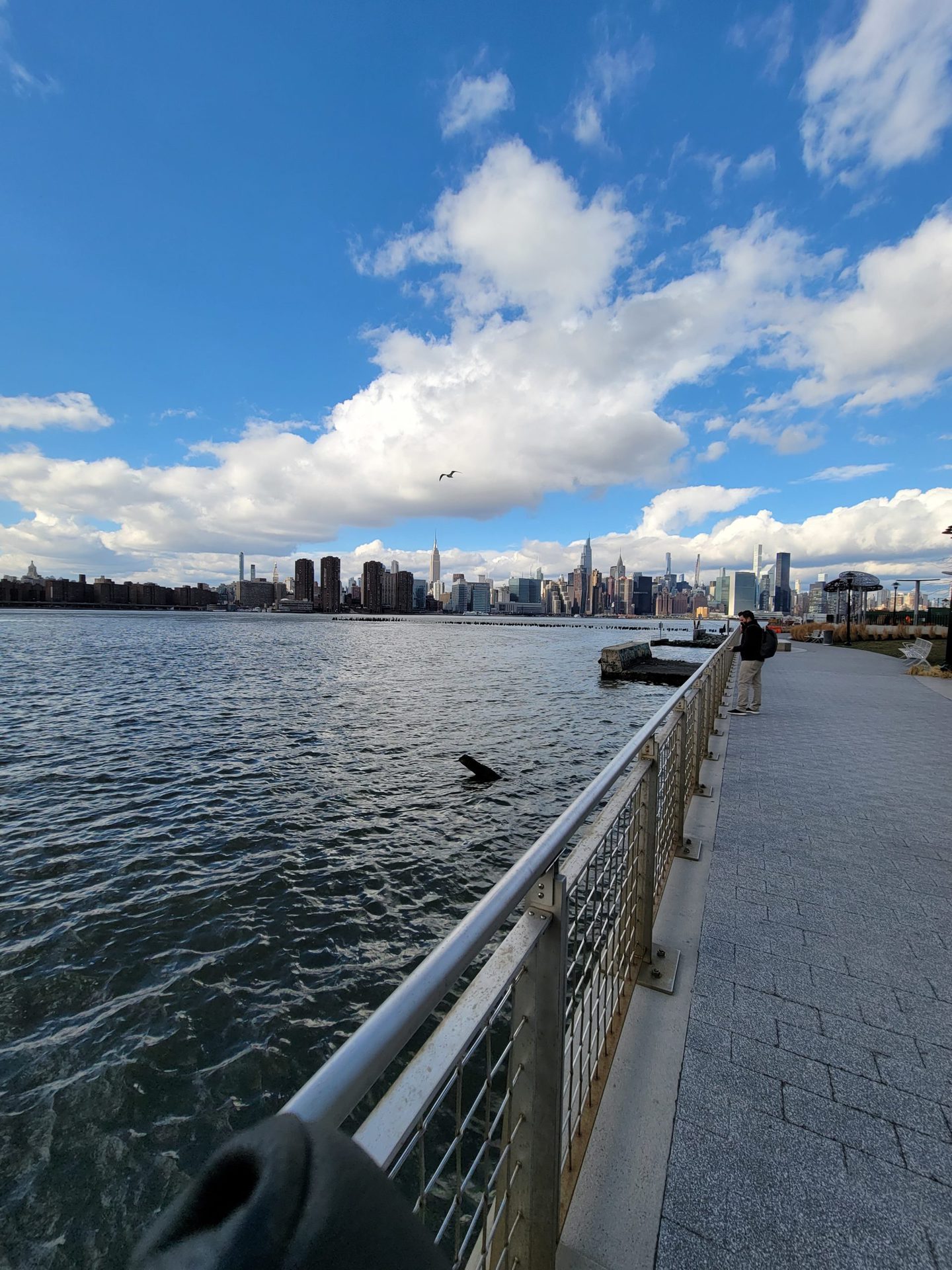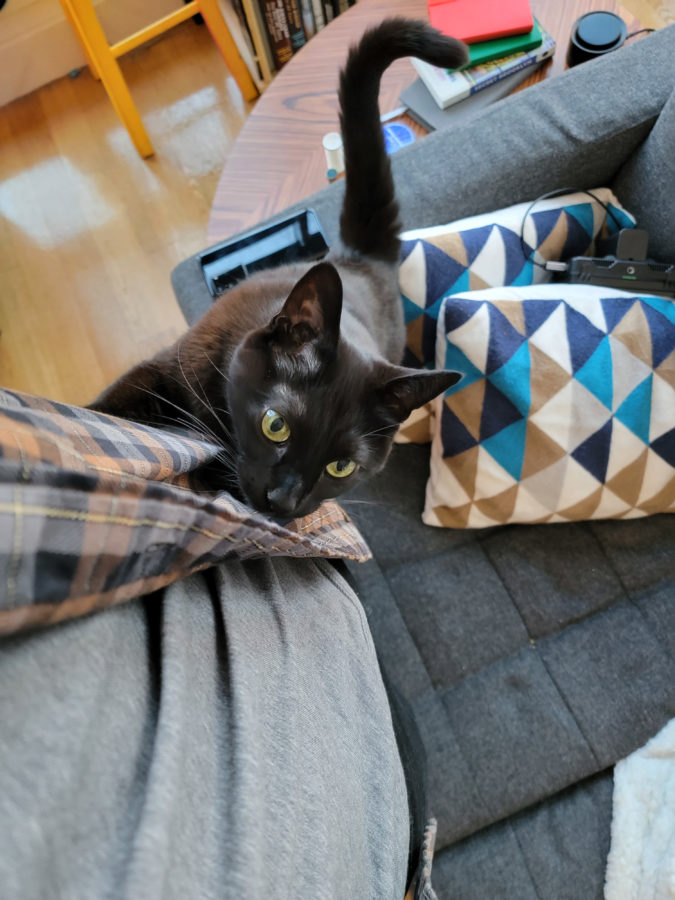Samsung uses the word Ultra to denote it’s biggest and best smartphone of that generation. Last year, the Galaxy S20 got an Ultra model, trumping the standard S20 in sheer size and brawn. Then, a few months later, the Galaxy Note 20 Ultra carried suit. But now, it’s 2021, and Samsung is back again, boldly branding Ultra on a new Galaxy S device, the Galaxy S21 Ultra.
To give some context, last year’s Samsung Galaxy S20 Ultra was a bit of a letdown. Despite its massive spec sheet, the most ultra part of the phone — the camera — didn’t work nearly as well as intended. The huge 108MP main camera sensor had serious focus issues, the 100x Space Zoom was nearly unusable, and to make matters worse, its bulky 5,000mAh battery didn’t last as long as people had hoped. To top it off, the phone cost a whopping $1,399. That’s the price of many people’s first car.
Also read: Samsung Galaxy S21 review
With the Galaxy S21 Ultra, it’s clear Samsung learned from last year’s mistakes. The successor to the Galaxy S20 Ultra uses a brand new 108MP sensor aided by a laser-guided focus system, adds an additional 10x optical telephoto sensor, and utilizes a dynamic AMOLED display that can scale down to just 10Hz for better battery life. The S21 Ultra arguably looks much nicer than last year’s flagship too, and comes in at $200 less, starting at $1,199.
But with so many incredible smartphones on the market for less than $1,000, is there room for Samsung’s $1,200 beast of a device? This is Android Authority’s Samsung Galaxy S21 Ultra review.
Design and display: Simple, yet sophisticated

- 165.1 x 75.6 x 8.9mm, 229g
- In-display ultrasonic fingerprint sensor
- Gorilla Glass Victus
- IP68 water and dust resistance
- 6.8-inch Dynamic AMOLED (3,200 x 1,440)
- 20:9 aspect ratio
- Infinity-O selfie cutout
- 120Hz adaptive refresh rate
The design of the Samsung Galaxy S21 Ultra follows the same general design trend of the rest of the S21 series. Samsung calls this a “Contour Cut” design, and I think it looks quite a bit better than the design from the S20 series. The camera bump on the S21 Ultra feels purposeful and intentional, even if we’re likely to see plenty of memes comparing it to Cyborg from DC Comics. While the S20 Ultra left the camera bump fairly exposed as a separate module, the S21 Ultra blends it into the design as an accent piece. I dig it.
Related: The best Samsung phones
Samsung has opted for a matte-textured design for the Galaxy S21 Ultra, which is far less of a fingerprint magnet compared to its glossy predecessor. This is a massive improvement, because glossy black on technology tends to make it look and feel cheap. The matte Phantom Black of my Galaxy S21 Ultra unit feels classy. The phone also comes in Phantom Silver, as well as Phantom Titanium, Phantom Navy, and Phantom Brown exclusively from Samsung.com.
As for buttons and ports, we’re getting a very similar setup to the Galaxy S20 Ultra. The right side of the phone houses the power button and volume rockers, with two microphone holes up top. The left side of the phone is completely void of buttons or ports, and on the bottom, you’ll find the USB-C port, speaker, and SIM card tray. There isn’t much south of the camera bump, save for the Samsung logo. Those stereo speakers are also pleasantly clear even at high volumes. It also the only S21 series device to support the Bluetooth 5.2 codec.
The body and display of the Galaxy S21 Ultra are both made of Corning’s latest Gorilla Glass Victus. Adding to this, it features IP68 water and dust resistance, as we’re used to seeing in most flagship devices, especially from Samsung. The rails of the device are made of aluminum, and unfortunately do attract fingerprints.

If you’re a fan of big displays, the Samsung Galaxy S21 Ultra will certainly fit the bill. The 6.8-inch display will feel pretty massive to just about anyone, but the overall lack of bezel means it’s not unwieldy. The display is bright and vivid, and I had no trouble using the Galaxy S21 Ultra outdoors.
If you’re a fan of big, bright, and vivid displays, the Galaxy S21 Ultra is the phone for you.
As mentioned before, this is a WQHD+ dynamic AMOLED display, with a resolution of 3,200 x 1440, though it should be noted that Samsung sets the phone to FHD+ out of the box. This display can dynamically adjust its refresh rate depending on the kind of content you’re viewing on the phone. This can go to as low as 10Hz for things like eBooks, or as high as 120Hz for high-fidelity gaming. You have the option to force a consistent 60Hz if you choose, but you can’t force a constant 120Hz.
This display is also curved, whereas the standard Galaxy S21 and Galaxy S21 Plus use flat displays. The curve isn’t too extreme though, and the device was still easy to hold, without the issue of ghost touches on the sides like I got with the OnePlus 8 Pro.

Similar to last year’s Galaxy S20 series, the Galaxy S21 Ultra uses an Infinity-O punch-hole camera in the top center of the display. I certainly prefer punch holes to notches, but I personally prefer them in the corner of the display instead of the center. Of course, this is all personal preference. Hopefully, we’ll soon start seeing under-display selfie cameras like the one in the ZTE Axon 20 5G transition to the mainstream. Maybe next year.
If you’re into under-display fingerprint sensors, the S21 Ultra has a new one to play with. This is Qualcomm’s second-generation ultrasonic fingerprint sensor, and it’s far superior to the first generation one we’ve seen since the Samsung Galaxy S10. It’s fast and accurate, and I’m really happy to have some kind of fingerprint unlock in the age of COVID-19. Because this is ultrasonic, it can also work when obstructed by water or sweat, so that’s pretty handy if you’re out in the rain.
The Galaxy S21 Ultra also supports a new S Pen accessory from Samsung. This pen has less functionality than the Bluetooth-enabled S Pen in the Galaxy Note series, but it can be useful for doodling or taking notes. And if you do want those features, Samsung will be selling an S-Pen Pro later this year.
Samsung is selling some specialized cases to hold the S Pen accessory, but they’re all a bit awkward, slotting in the pen at a weird angle that’s a bit hard to remove. They’re only available for the S21 Ultra though, so if you’re an S Pen diehard, you might want to take a look.

Overall, the design of the Samsung Galaxy S21 Ultra is a vast improvement over last year’s S20 Ultra. Personally, I think matte textures are far better than glossy in nearly every circumstance, and the new camera bump on this year’s model looks classy. Not to mention, Samsung removed the 100x Space Zoom wordmark on the bump. Good riddance.
Performance and battery: Fast and efficient
- Qualcomm Snapdragon 888
- X60 integrated 5G mobile platform
- 12-16GB of RAM
- 128-512GB of storage
- No microSD card expansion
- 5,000mAh battery
- 25W wired charging
- Wireless and reverse wireless charging
Performance
The Samsung Galaxy S21 Ultra is the first device in the United States to feature the new Qualcomm Snapdragon 888 mobile platform, and as expected, this phone absolutely flies. The global model of this device will launch with Samsung’s own Exynos 2100 chipset, but for the purpose of this review, I’ll be focusing on the Snapdragon 888-powered US variant.
The Galaxy S21 Ultra is a powerhouse.
In daily use, I saw no slowdowns or stuttering on this device, and it chewed through effectively every task I threw at it with ease. No apps felt sluggish or were kicked out of memory, likely due to the blisteringly fast Snapdragon 888 processor and substantial 16GB of RAM packed into my unit.
As you can see in the chart above, the Samsung Galaxy S21 Ultra smoked in Gary Sim’s Speed Test G. CPU, mixed, and GPU independently received some of the best scores we’ve tested, with only the GPU falling behind the Asus ROG Phone 3. The Exynos 2100 model performed surprisingly well too, which is great for global buyers who have long had their worries about Exynos version Samsung devices. We’ll have a deep dive into the Exynos 2100 variant very soon.
In benchmarks, the Samsung Galaxy S21 Ultra performed about as well as you’d expect from Qualcomm’s latest chipset. The S21 Ultra notched a score of 5,022 in Geekbench 4 single-core and 13,915 in multi-core. By comparison, last year’s Snapdragon 865-powered Galaxy S20 Ultra scored 4,300 and 13,379, respectively. In 3DMark, the S21 Ultra scored 7,895, beating out last year’s score of 7,310.

As is to be expected of any 2021 flagship, the Samsung Galaxy S21 Ultra is a 5G-capable device. The Qualcomm Snapdragon 888 is the first SoC from the company to feature an integrated 5G modem in the form of the Qualcomm X60. This modem has the ability to connects to low-band, mid-band, and mmWave 5G networks, and my review unit was packed with a Verizon SIM card to fully test these speeds. Your experience will vary based on location and network compatibility. But of course, if you find yourself in an optimal 5G location, particularly with mmWave 5G, the speeds you can achieve are pretty outrageous.
See also: The best 5G phones you can buy right now
Adding to the connectivity bumps, the Galaxy S21 Ultra is the first phone in the U.S. to feature Wi-Fi 6E. I won’t wax poetic about what this protocol is, but expect better speeds and bandwidth allocation on these networks. If you want to learn more, check out our dedicated article here.
The Samsung Galaxy S21 Ultra comes with between 128-512GB of storage, which I think should be a healthy amount for most people. The baseline storage of most phones has finally moved up to 128GB, with even the $349 Google Pixel 4a featuring this capacity. Unfortunately, Samsung has removed microSD card expansion from the entire Galaxy S21 line of devices. This may be seen as quite a blow to many longtime customers who are used to Samsung offering all the bells and whistles in terms of I/O. But now, Samsung is joining the leagues of other manufacturers offering no headphone jack and no microSD card expansion. If you’re dead set on this feature, you’ll have to look at other devices like the LG V60 or one of last year’s Galaxy S20 series devices.
Battery
The Samsung Galaxy S21 Ultra features a sizeable 5,000mAh battery. This is a larger battery than you’ll find in most devices, though it is still bested by the 6,000mAh cell in the Asus ROG Phone 3. Still, the dynamic refresh rate and out-of-the-box FHD+ resolution setting afforded the Galaxy S21 Ultra some pretty impressive battery life. On lighter days, I got two whole days out of the Galaxy S21 Ultra, ending the second full day with about 15% remaining. On heavier days running around the city shooting lots of photos, videos, and a little gaming, I got just over one full day. On average, I expect most people to get just over a day and a half from the S21 Ultra.
Related: Here are the best Samsung Galaxy chargers
Perhaps one of the most controversial parts of the Galaxy S21 series is the omission of a charging brick in the box. This comes on the heels of Apple and Xiaomi scrapping the charger from their packaging, primarily citing environmental reasons. While I can appreciate that at this point most people probably have a charging brick, that isn’t the case for everyone. And considering the cable included with the Galaxy S21 Ultra is a USB-C to USB-C cable, many people will have to buy a whole new charger if they want to use that cable with their device. Samsung will gladly sell you a charger for $19.99 if you don’t have one, but it seems like quite a cop-out to me.

The S21 Ultra charges at a maximum rate of 25W. This is an interesting shift from last year, when Samsung sold an optional 45W charger for the Galaxy S20 Ultra. That said, the 45W charger was found to have only a minor effect on overall charging speed, which is likely why Samsung pulled support for it. This is a bummer, as brands like OnePlus, Huawei, Oppo, and Xiaomi have been pushing charging speeds to 30W, 60W, and even 120W in recent years. I’d hoped that Samsung would eventually start playing catch-up, but I anticipate removing the charger from the box will kill or severely stunt the race for the fastest-charging smartphone.
The Galaxy S21 series also features fast wireless charging up to 15W, and reverse wireless charging at up to 9W. The latter can be useful if you have a smartwatch or a pair of truly wireless earbuds that need a quick jump, but if you’re charging up another phone, heat loss will probably make the power transfer harder to justify, at least in my experience.
15W wireless charging is also fine, but it’s certainly not the fastest on the market at the moment. OnePlus has used 30W wireless charging since the OnePlus 8 Pro, and Huawei introduced 40W wireless charging in the P40 series.
Camera: One, two, zoooooooooooooom

- Wide: 12MP, ƒ/2.2, 1.4µm pixel size, dual-pixel AF, 120-degree FoV
- Main: 108MP, ƒ/1.8, 0.8µm individual pixel size, OIS, phase-detection AF
- 3x optical telephoto: 10MP, ƒ/2.4, 1.22µm pixel size, OIS, dual-pixel AF
- 10x optical telephoto: 10MP, ƒ/4.9, 1.22µm pixel size, OIS, dual-pixel AF
- Laser AF sensor
- Selfie: 40MP, ƒ/2.2, 0.7µm, with phase-detection AF
To put it mildly, the camera system on last year’s Galaxy S20 Ultra was a mess. The main 108MP sensor had major focusing issues, the 4x optical telephoto camera wasn’t quite as long as many competing flagships, and the 100x Space Zoom that Samsung printed on the camera module itself was barely usable.
Thankfully, Samsung has fixed most of those problems for the Galaxy S21 Ultra. The new ISOCELL Bright HM3 108MP sensor brings improved focusing and low-light performance, especially when aided by the new laser-guided focus assist. And now, instead of sporting one telephoto camera, the S21 Ultra is packing two. In Samsung’s camera module you’ll find a wide, main, 3x optical telephoto, and a 10x optical telephoto camera, making it just the second smartphone globally to offer a short-range lens and 10x zoom camera, alongside Huawei’s P40 Pro Plus.

Specs aside, you’re likely curious how this camera system actually performs. To my delight, I can confirm that the 108MP main sensor has much better focusing performance than last year’s model. Aided by the laser-guided focusing system, I very rarely had any issues trying to get a lock on a subject. That was quite a relief.
Photography terms explained: ISO, aperture, shutter speed, and more

Samsung Galaxy S21 Ultra full 108MP sample image
Samsung Galaxy S21 Ultra main sensor nona binned image

That 108MP sensor is nona-binned by default, meaning Samsung treats groups of nine pixels as one big pixel, and the quality is definitely better than last year. While you can take full 108MP images, you probably shouldn’t. They don’t look great, and individual photosites that small mean that even though you can crop in further after you take the image, there just isn’t enough light saturation in each photosite for the resulting image to look good. Just use the optical telephoto cameras if you need to zoom.
But when nona-binned, I was quite happy with the resulting images out of the 108MP sensor. The color coming out of Samsung sensors seems to have gotten much better since the Galaxy Note 20 series, with slightly more muted, natural tones and less overt saturation. There is a good amount of detail without the feeling that the image is oversharpened. That said, Samsung phones do tend to overexpose just a bit straight out of camera, and that remained true here. The large main sensor also creates a nice amount of natural bokeh, and generally, I didn’t feel a strong need to use portrait mode.
This new sensor also gives pretty great low-light performance, even without night mode on. Images are pretty clear, and sharpness was very good in general. You can still get a little bit of smearing if you don’t hold your hands quite still enough, but in general, the low light of of this phone is stellar.
Wide-angle shots came out better than I was expecting as well. The distortion correction around the edges works very well, and color is nice and natural. While wide-angle cameras often have a quite different color profile than other sensors, Samsung did a good job of giving all the sensors a similar tonality.
Okay, now we get to those optical telephoto cameras. As mentioned before, the Samsung Galaxy S21 Ultra has two of them. There’s a 3x optical telephoto alongside a 10x optical telephoto. This is great to see because while most people will likely use 3x most often, it’s handy to have that extra reach when you need it.
The quality of both cameras is quite good, with the 3x coming in just a bit sharper than the 10x lens. This makes sense though, as the 10x optical camera has a smaller aperture. A smaller aperture means less light, more noise, more noise reduction, and ultimately, a slightly softer image. Overall though, it’s vastly better than what you previously got from a software crop.
The 10x optical camera also dramatically improves more extreme zoom compared to last year’s Samsung Galaxy S20 Ultra. Both 30x and 100x are usable now, even if 100x can still look a bit rough. But considering 100x was pretty much useless last year, this is a big improvement. Hard lines and contrast are much better, and you can read text much easier. The S21 100x also looks better than the same zoom from the Huawei P40 Pro Plus, which was a nice surprise.
To make taking images at longer focal lengths easier, Samsung has implemented a shake-reduction system at zooms past 30x. This will bring up a picture-in-picture-style image with a crosshair to help you aim, and once it notices you trying to be stable, it will turn yellow and kick in the shake reduction. This works as a sort of warp stabilizer and is incredibly useful when trying to stay focused on a tight area of an image. While it can still drift around a decent amount at 100x, it’s very useful.
Portrait mode photos generally looked good and had great edge detection due to that laser-guided autofocus sensor, but it’s still not perfect. The system can get confused if there is a lot of detail behind a subject, and I’m hoping this improves over time, if not totally replaced by larger portrait-length sensors, which would create natural depth of field.
Selfies also look quite good on the S21 Ultra. The sensor is 40MP, but by default it will bin down to 10MP. The color is really great, especially in good light. In lower light color gets a bit distorted and the image gets a bit soft, but overall I was happy with this camera.
One UI 3.1 has introduced two different settings for selfies: natural and bright. Natural has more contrast, whereas bright will bump the shadows. I definitely preferred the natural mode, since it had more pleasing contrast in my face.
Where video is concerned, the Galaxy S21 Ultra can shoot up to 8K at 24fps, or 4K at 60fps. The quality generally looked pretty stellar, but I did notice some oversharpening and artifacts whenever there were too many hard edges in a scene. Stabilization was also quite good, presumably due to a combination of the optical image stabilization in all lenses but the wide, as well as software stabilization.
The selfie camera can also shoot 4K video at up to 60fps, and overall it looked great. Color and sharpness were just as good as the other cameras, and I was very impressed overall.
Samsung has also introduced a couple of new features, like Single Take 2.0 and Director’s view. Single Take 2.0 can create multiple types of media from one recording of video. It can produce filtered videos and photos, speed effect clips, portraits, wide/cropped shots, and highlight videos. Basically, you press the record button, and Single Take will make a variety of media from that clip.
Director’s View will let you switch between different viewpoints while recording video, from .6x to 1x to 3x. It can also show a feed from the selfie camera in the top corner, which allows you to have multiple different viewpoints in one clip. The phone will show you all three angles in the form of small thumbnails at the bottom of the screen, but instead of spinning up all three camera sensors, the previews are just cropped images from the wide sensor.
The Samsung Galaxy S21 Ultra has one of the best camera suites we’ve ever seen on an Android phone.
Overall, the camera system in Samsung Galaxy S21 Ultra is one of the best you can get on Android. It’s incredibly versatile, with optical telephoto cameras reaching from .6x to 10x, and the up to 100x space zoom really makes it a telescope in your pocket. It’s great.
Note that all the photos shared above have been compressed to optimize for site load speed. If you want to check out all the images in their full resolution, as well as even more samples, you can find them in the Google Drive folder here.
Software: One UI 3.1

- Android 11
- OneUI 3.1
The Samsung Galaxy S21 Ultra is running Samsung’s One UI 3.1 based on Android 11. One UI 3.0 brought a number of new features, like support for bubble notifications, quick access to widgets, more precise volume control, and the introduction of Samsung Free. The 3.1 update adds a number of smaller tweaks, like background call videos, Director’s View in video, and the ability to record from the front and rear camera at the same time.
On the left home screen, Samsung has given you an option to use Google Discover or Samsung Free. Samsung Free is a new service that is much akin to the old Bixby home, offering many of Samsung’s free apps and services such as Pluto TV. On some variants of the phone, Samsung has also switched to using many Google apps as default, like Google Messages for texting. That’s not the case for the US model, however, with Samsung messages still set as the default option.
Overall, One UI is distinctively Samsung. The company has managed to cement a specific style in its interface ever since the introduction of One UI with the Galaxy S10 series, and it remains instantly recognizable. Most of the UI elements are rounded, which complements the curves on Galaxy S series devices.
Android 11 on Galaxy phones: Hands-on with all the new One UI features
It should be noted that Samsung now promises three years of Android version updates for its devices. This is a pretty big deal because it means you can be sure you’ll have access to the latest and greatest Android has to offer for a few years into the future.

That said, Samsung features advertisements for other Samsung products in its UI. This is simply unacceptable considering how much the Galaxy S21 Ultra costs. Samsung has caught a lot of flack for this in the past, but it has yet to remove pop-ups like those found above.
Unfortunately, the Samsung Galaxy S21 Ultra has removed Samsung’s wonderful MST (Magnetic Secure Transmission) technology from the US version of the device, though some regional variants still feature it. This is the technology that allowed Samsung Pay to emulate a credit card by emitting a magnetic field matching that of a credit card strip. Now, Samsung is moving to dump the tech since NFC is becoming so popular. This is a bit strange since MST was one of Samsung Pay’s biggest strengths.
Samsung Galaxy S21 Ultra specs
| Samsung Galaxy S21 Ultra | |
|---|---|
| Display | 6.8-inch Dynamic AMOLED Curved WQHD+ 3,200 x 1,440 at 515ppi Adaptive 120Hz refresh rate HDR10+ certified |
| Processor | Qualcomm Snapdragon 888 or Samsung Exynos 2100 |
| RAM | 12 or 16GB |
| Storage | 128, 256, or 512GB |
| MicroSD | No |
| Battery | 5,000mAh Fast wired and wireless charging Reverse wireless charging |
| Cameras | Rear: – Wide-angle: 108MP, ƒ/1.8, 0.8µm with OIS and phase-detection AF – Telephoto: 10MP, ƒ/2.4, 1.22µm with OIS, dual-pixel AF, and 3x optical zoom – Telephoto: 10MP, ƒ/4.9, 1.22µm with OIS, dual-pixel AF, and 10x optical zoom – Ultra-wide: 12MP, ƒ/2.2, 1.4µm with dual-pixel AF and a 120-degree FoV – Laser AF sensor 10x optical zoom Front: |
| Connectivity | 4G LTE support 5G (sub-6GHz, SA and NSA, mmWave) Wi-Fi 6E support Bluetooth 5.2 |
| S Pen support | Yes |
| Operating System | One UI 3.1 Android 11 |
| Water resistance | IP68 |
| Security | Ultrasonic fingerprint sensor, face unlock |
| Color | 128 GB in Phantom Silver and Phantom Black
256 and 512GB in Phantom Black Future colors: Phantom Titanium, Phantom Navy, and Phantom Brown |
| Dimensions and weight | 75.6 x 165.1 x 8.9mm 229g |
Samsung Galaxy S21 Ultra review: Value and competition

- Samsung Galaxy S21 Ultra (12GB/128GB) — $1,199/€1,259/£1,149
- Samsung Galaxy S21 Ultra (12GB/256GB) — $1,249/€1,309/£1,199
- Samsung Galaxy S21 Ultra (16GB/512GB) — $1,379/€1,439/£1,329
Starting at $1,199, the Samsung Galaxy S21 Ultra is definitely in the upper price bracket of smartphones. That makes sense though, as it packs some of the best specs you can get on the market right now.
The Galaxy S21 Ultra’s biggest competition comes from the top phones in the iPhone 12 series. With the 128GB iPhone 12 Pro Max starting at $1,099, Samsung and Apple are competing on a very tight margin with their respective ultra-premium flagships. Apple’s A14 Bionic processor still bests the Snapdragon 888 in benchmarks, but in real-world use, you probably won’t notice much difference in performance between the two devices. The Galaxy S21 Ultra starts with two times as much RAM if that matters to you, but Apple’s excellent RAM management in iOS will likely make it so you won’t be able to tell the difference.
As far as features go though, the Galaxy S21 Ultra offers a much more versatile camera array. While the iPhone 12 Pro Max offers a wide, main, and 2.5x telephoto sensor that all come in at 12MP, Samsung comes in swinging with a wide, a huge 108MP standard, 3x optical telephoto, 10x optical telephoto, and a laser-guided focus system. In terms of pure reach and versatility, Samsung bests nearly everyone on the market for camera hardware, save maybe Huawei’s P40 Pro Plus.
Compared to other ultra-premium Android phones like the Oppo Find X2 Pro, the Galaxy S21 Ultra has the newer Snapdragon 888 Processor, a bigger 5,000mAh battery, wireless charging, and the 10x optical telephoto sensor. But Oppo has 65W wired charging alongside an arguably more premium design. Also, it still has a great 5x optical telephoto camera, and the main sensor has fantastic color quality. Likewise, put alongside Samsung’s own Galaxy Z Flip 5G, and the main losing point for the Ultra is the foldable display. Considering Samsung now has multiple folding phones on the market, we’re likely to see premium folding devices fall in price soon.
But the most common phone you’ll probably see the S21 Ultra pit up against is Samsung’s own Galaxy Note 20 Ultra. The devices are actually quite similar, offering big 120Hz displays, super versatile camera systems, and luxurious designs. The S21 Ultra bests the Note 20 Ultra in speed and camera versatility, offering Qualcomm’s new Snapdragon 888 vs the 865 Plus, and giving you a 10x optical zoom camera vs the Note 20 Ultra’s 5x camera. But the Note has microSD card expansion and the smart S Pen, which could still be attractive to many users.
If you want the absolute fastest Samsung phone with the best camera system, the S21 Ultra is the device to beat. But if you need extra storage or the S Pen, the Note 20 Ultra is still worth a look.
Samsung Galaxy S21 Ultra review: The verdict

Starting at $1,199, the Samsung Galaxy S21 Ultra is not a cheap device. But considering the specs it’s packing, I wouldn’t call it overpriced, either. While there are bound to be hoards of phones launching with the Qualcomm Snapdragon 888 this year, the Galaxy S21 Ultra is one of the first you can get in the United States. In addition, if you want 10x optical telephoto zoom, you’re left between the S21 Ultra or the Huawei P40 Pro Plus — and only one of those is easy to buy and has full access to Google services.
The Galaxy S21 Ultra is a killer combo of great design, blazing-fast performance, a wonderful display, long-lasting battery life, and one of the most versatile camera systems you can get in a smartphone today.
Interestingly, Samsung seems to be pushing customers towards the S21 Ultra this year with its latest Galaxy S series evolution. While 2020’s Galaxy S20 and Galaxy S20 Plus were quite feature-packed on their own, this year’s S21 and S21 Plus are much less so. The S21 features a “Glasstic” design, and neither device has a WQHD+ display, only FHD+. Not to mention, the S21 and S21 Plus feature the exact same camera system from last year. If you want a new camera experience and the very best specs, the S21 Ultra is your only option out of the three.
All that said, I think the Galaxy S21 Ultra represents a fantastic start to 2021 for Samsung. It has a great design, a wonderful display, battery life that should last almost anyone a full day, and possibly the most versatile camera system you can get in a smartphone today. The baseline 12GB of RAM should be more than enough for years to come, and Samsung’s commitment to delivering at least three years of major Android updates to its smartphones means you won’t have to worry about missing out on the latest and greatest features for quite a while.
If microSD card expansion, a headphone jack, or super-fast charging are important to you, sadly you’ll have to look elsewhere. But if you’re ok with those trade-offs, the Galaxy S21 Ultra is one of the best all-rounder devices you can get today.
That’s our Samsung Galaxy S21 Ultra review. What do you make of Samsung’s powerhouse 2021 flagship? Let us know in the comments and sign up below for all the latest Android Authority reviews direct into your inbox.




































